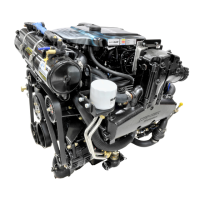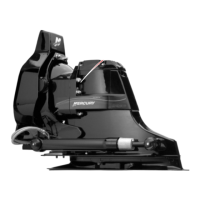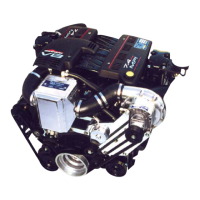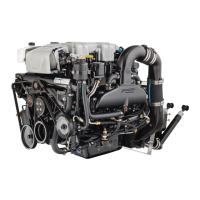21
CC918
Propeller Selection
IMPORTANT: Installed propeller must allow engine to run at its specified maximum wide-open-
throttle revolutions per minute (rpm). Use an accurate service tachometer to verify engine operating
rpm.
It is the responsibility of the boat manufacturer and/or the selling dealer to equip the power package with the
correct propeller(s). Specified engine wide-open-throttle (WOT) and operating rpm range are listed in “SPECIFI-
CATIONS”.
IMPORTANT: The engines covered in this manual are equipped with an rpm rev-limiter that is set to an
upper (or limited) rpm amount. This limit is slightly above the normal operating range of the engine and
is designed to help prevent damage from excessive engine rpm. Once the rpm drop into the recom-
mended operating rpm range normal engine operation resumes.
Select a propeller that will allow the engine power package to operate at or near the top end of the recommended
wide-open-throttle operating rpm range with a normal load. Generally, there is a 150 rpm difference between 1
inch changes in propeller diameter or pitch.
If full throttle operation is below the recommended range, the propeller must be changed to prevent loss of perfor-
mance and possible engine damage. On the other hand, operating an engine above the recommended operating
rpm range will cause higher than normal wear and/or damage.
After initial propeller selection, the following common problems may require that the propeller be changed to a
lower pitch:
• Warmer weather and greater humidity cause an rpm loss.
• Operating in a higher elevation causes an rpm loss.
• Operating with a damaged propeller or dirty boat bottom causes an rpm loss.
• Operating with increased load (additional passengers, pulling skiers, etc.).
For better acceleration, such as is needed for water skiing, use the next lower pitch propeller. However, do not
operate at full throttle when using the lower pitch propeller but not pulling skiers.
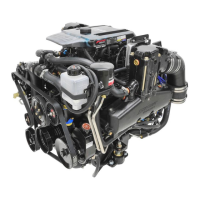
